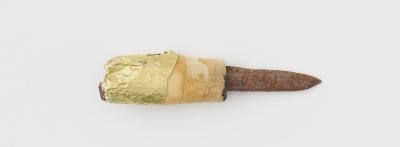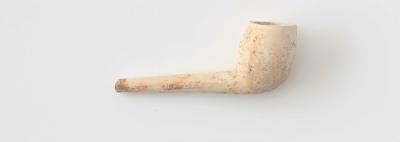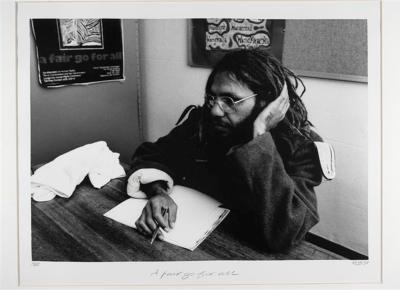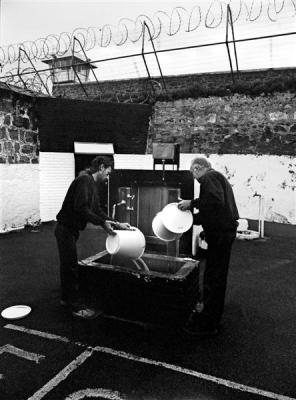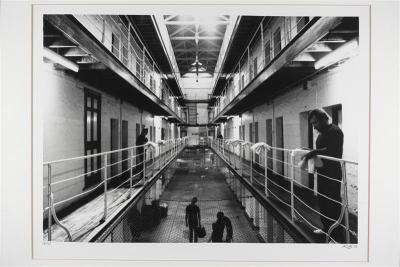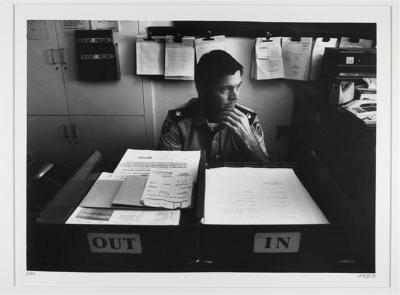BEDSIDE CABINET
Small, rectangular, wooden, bedside cabinet, painted with the Aboriginal flag. Small, rectangular, wooden cabinet, with a wide, flat, rectangular table top. The front of the cabinet is a hinged door which opens outwards. The surface of the cabinet is painted yellow. The door is painted with the Aboriginal flag, with the background painted in back on the top half, and red on the bottom half, with a large yellow circle in the centre. Inside the cabinet are two shelves. The inside of the door is partially painted white and the rest of the interior is unpainted.
Provenanced to Fremantle Prison. Likely made in the Carpenter's Workshop.
Details
Details
Workshops were a necessary part of the Convict Establishment and were some of the first buildings constructed on site. The Carpenters Workshop was originally a wooden building at the front of the Prison until 1858, when it was moved next to the Blacksmith’s Shop at the south-eastern corner of the site. Whilst carpentry was regarded as a difficult skill to learn, and not many of the convicts were trained to work with wood, carpenters were essential in the new Establishment’s construction. Convicts were trained to lay the joists, floors and roof, and build the scaffolding required around the new Prison buildings. They also built the wooden portable houses used by road parties, wagons, trucks and coffins.
In the later years the Carpenters’ Shop was reputedly one of the most productive shops in the Prison. Apprenticeships were relatively easily to obtain, with prisoners serving four years or more. The apprentices who worked in the shop and demonstrated an aptitude for the job were eligible to apply. In the Carpenter’s Shop, along with an instructor, there would be several prisoner tradesmen, allowing the apprentices an opportunity to learn. The work varied from a regular production line of all the cell furniture used at Fremantle Prison, to the finer art of teak fittings for yachts and quality handmade furniture.
When Fremantle Prison closed in 1991 the Carpenters’ Shop was still a productive prison industry. The cell furniture in the Fremantle Prison Collection, made in the Carpenters’ Workshop, was left onsite when the Prison closed in 1991.
